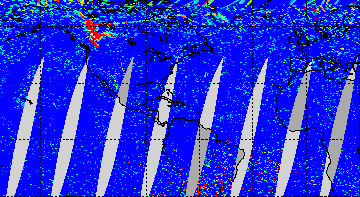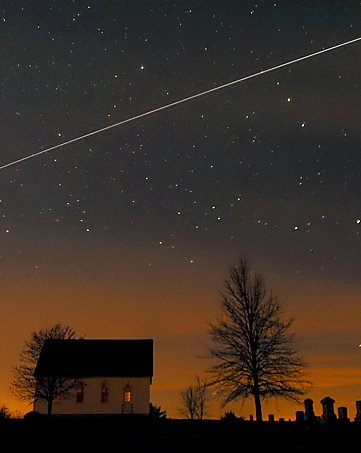| VOTE FOR SOHO: The Solar and Heliospheric Observatory (SOHO) is in the quarterfinals of NASA's Mission Madness tournament. You can propel SOHO to the next round: click here and vote for a spaceweather.com favorite! NOT A ROCKET: News reports that a Russian rocket fell over the US mid-Atlantic coast on Sunday evening, March 29th, are probably incorrect. A spent Russian rocket booster did reenter Earth's atmosphere on March 29th, but apparently not over the USA. According to data published by US Strategic Command, the reentry occurred near Taiwan (24° N, 125° E) at 11:57 p.m. EDT. So what were those lights in the sky over Maryland and Virginia two hours earlier? Eyewitness accounts of the Atlantic Coast fireball are consistent with a meteoritic bolide--a random asteroid hitting Earth's atmosphere and exploding in flight. VOLCANIC CLOUDS IN MOTION: Alaska's Mt. Redoubt volcano has erupted at least 19 times since March 22nd, and several of the larger blasts have hurled plumes of ash and gas into the lower stratosphere. The GOME-2 (Global Ozone Monitoring Experiment) sensor onboard Europe's MetOp-A satellite is tracking Mt. Redoubt's sulfur dioxide clouds, colored red in this 6-day animation: 
Click to view a full-sized animation with labels
The sequence begins on March 25th and ends on the 30th. One cloud has just crossed North America en route to Europe; a second cloud is following a few days behind. The last time an Alaskan volcano blew its top (Kasatochi in 2008), clouds like these caused fantastic sunsets around the northern hemisphere. More could be in the offing. If you live along the SO2 ground track, keep an eye on the twilight sky for signs of Redoubt. UPDATE: Flying photographer Brian Whittaker has spotted one of these clouds from an airplane 39,000 ft above the Canadian Rockies. Click here for his account and a spectacular photo. SIGHTINGS: If you live in North America, this is a good week to see a large spaceship pass by in the night sky. That would be the International Space Station: 
"Here it is gliding over the Mt. Zion Church near Whitton Switch, Missouri, on March 29th," says photographer Dan Bush. "I took the picture using my Nikon D70." Many US and Canadian towns are favored with similar flybys in the evenings ahead. Check the Simple Satellite Tracker to find out when to look. more images: from Tom Wagner of Waterloo, Iowa; from Ken Scott of Leland, Michigan
March 2009 Aurora Gallery
[previous Marches: 2008, 2007, 2006, 2005, 2004, 2003, 2002]
Explore the Sunspot Cycle | 
